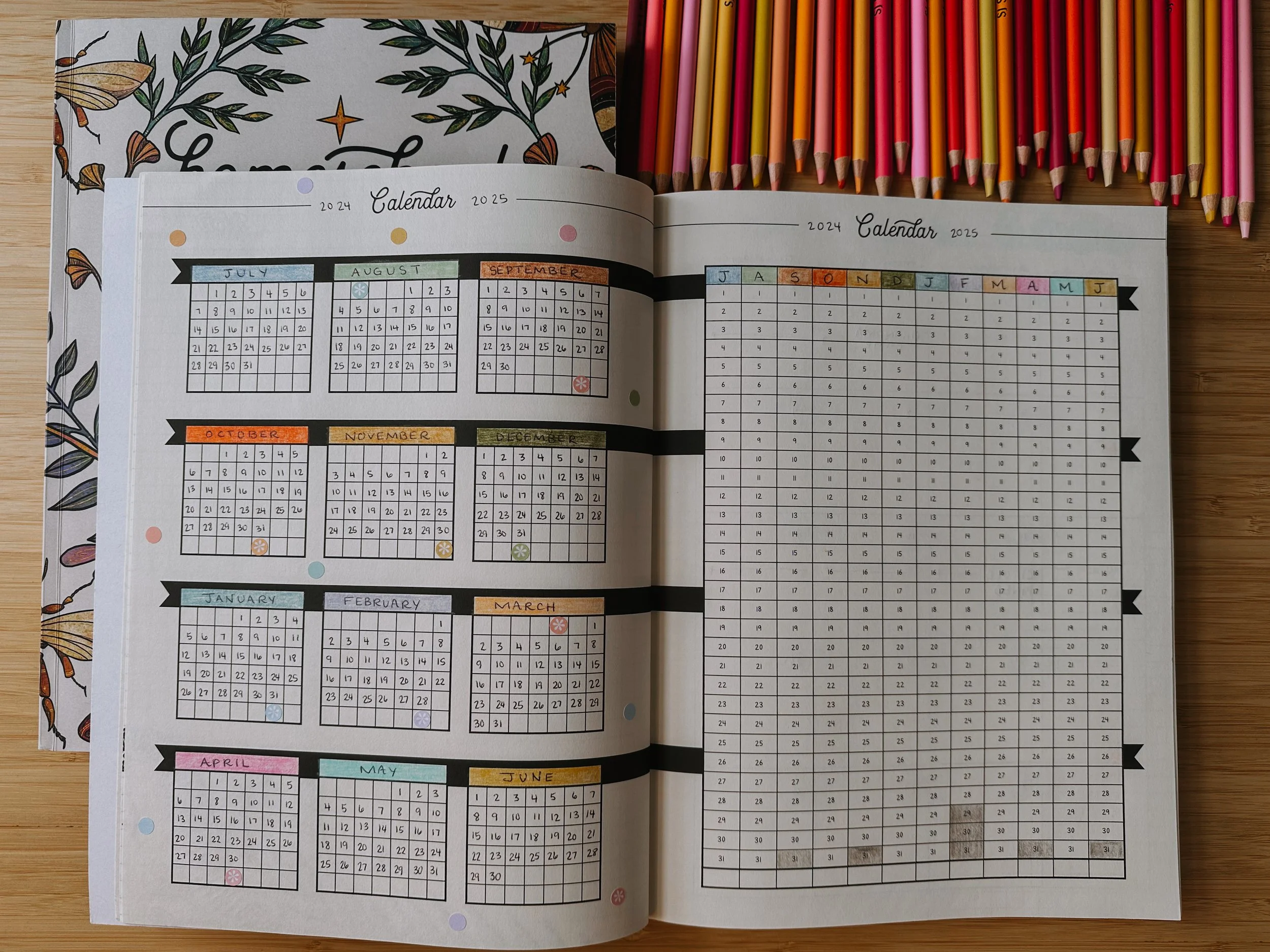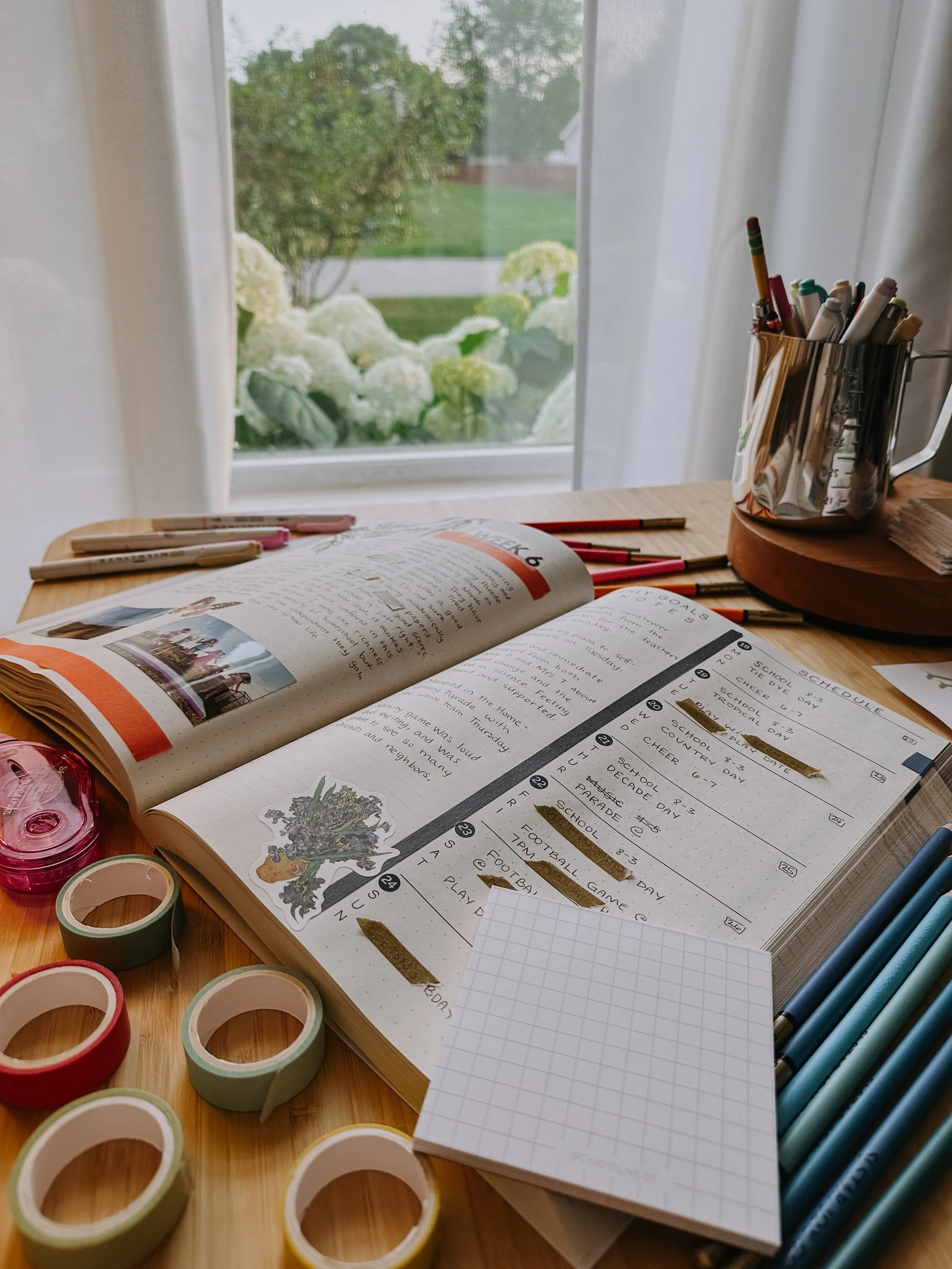5 Common Planning Mistakes Homeschoolers Make and How To Avoid Them
I’ve been dedicated to using a planner every year since 1996. That’s a lot of planners 😅! For many, many of those years, the planner I used was whatever planner I was given or whatever I found that was cheap. No nice paper or unique layout and definitely not a cool cover! I plastered the covers with magazine cutouts and stickers. I made lists wherever I found a spot. I drew in my calendars by hand if needed! It wasn’t precious, or perfect, it was a tool. Even today with adult money and better design taste, I still feel like we shouldn’t be too precious with something that’s meant to be our second brain. We have to let it get messy and be imperfect to take the pressure off and just do it.
Through all those planning years I’ve made many mistakes, especially once I started homeschooling and needed to plan in WAY more detail than ever before!
If you feel like you’re afraid to make the first mark in your planner, or if you aren’t sure how to use certain pages so you leave them blank, or you don’t even know what to write, or are afraid to mess it all up… I’m here to talk you down!
Common Planning Mistakes
These are the biggest mistakes I have made personally at one time or another, and that I know others make because they are quite easy to do:
❌ Planning too far ahead
❌ Planning too much
❌ Not planning margin
❌ Not having a routine/workflow
❌ Not reflecting + journaling
Were any of those relatable? Were you nodding along because… oh yeah, the constantly planning too much thing! Margin? Who is she? It's just good to be aware so you can shift and adjust. Every week is a new week to make little changes!
Homeschool Planning Tips (Not Just For Homeschoolers!)
We have agreed we have all made at least one of those mistakes, but most likely many at once! But what are the solutions?
STRUGGLE: ❌ Planning too far ahead
SOLUTION: ✅ For weekly plans, only plan one week in advance! Of course, you can do big-picture overviews of the year with general plans, adding in important holidays, etc. But I do not ever recommend filling in a planner way ahead of time because things change so much from week to week, you’ll surely be off of your plan before you know it. If you find that you need to plan a few weeks out, try using the “Weekly Overview” pages of the schoolnest planners to do some loose planning in the couple weeks ahead, knowing that your loose plans may change and that is okay.
STRUGGLE: ❌ Planning too much
SOLUTION: ✅ Wanting to make a list of all the things you could possibly do and just fitting them into the next day's schedule seems like that is what planning is, right? Oh no. Learning to be sensitive to the realistic amount of time something takes is extremely helpful. First, put in the things that have a set time, and always overestimate how long it might take. Then write in the essential things - and be honest about what is essential! The rest can go into a list of optionals that can be attacked if the essentials are completed. Optionals can be moved to tomorrow. Planning too much doesn’t assure that more will get done, but it does assure that we will feel like we failed at it.
STRUGGLE: ❌ Not planning margin
SOLUTION: ✅ Planning margin, white space, or empty time into your day and week is a LEGIT method. Not only do things take longer than you think they will and end up filling in some of that margin anyway, but planning in downtime guarantees that you GET some of it!
STRUGGLE: ❌ Not having a routine/workflow
SOLUTION: ✅ Having a set routine for your planning sessions might look like leaving your planner on a certain desk, visible and open, and every Friday afternoon you sit and look over the week, crossing off what was completed and jotting down a few reflections of how the week went. It might look like Sunday evening with some colored pencils and a photo printer, writing in some memories and making a list for the following week. Make it cozy, make it creative, but most importantly, make it easy to reach for consistently every day and week.
STRUGGLE: ❌ Not reflecting + journaling
SOLUTION: ✅ Journaling in a planner? What? Yes!! Usually, planners are fairly useless as soon as we have crossed off that to-do list. There is nothing useful or nostalgic about seeing that we completed page 43 of math on a Tuesday in November. But what IS worthy, is seeing the little photo of the book stack we picked up at the library that day and the memory we jotted down about the new hiking trail we discovered. A planner that helps us live an intentional life with gratitude of our growth is the most useful of all.
Reflection
schoolnest Planners all include space for journaling and reflecting, as it is an essential part of the process and leaves you with a more meaningful overview of your year. The point of checklists and to-do’s is to complete something meaningful in our lives - so make sure to reflect on those meaningful things you are doing.
What is your BEST planner tip? What’s working for you lately? Leave it in the comments below so we can help each other!
FREQUENTLY ASKED QUESTIONS
-
schoolnest has three planner styles:
The Homeschool Lesson Planning Notebook
This one is big! It has space for monthly, weekly, and daily journaling and planning! If you have a lot of kids, write a lot, and need open ended space for your own layouts, this planner is for you!The Homeschool Lesson Planning Minimalist Notebook
This one is just like the big one above, but without daily journaling pages. This planner is for you if you love all the features of the original planner but do not need the extra open-ended daily space.The Weekly Planning Notebook
This planner has a flexible weekly grid that can be used in time schedule format or life category format. It is also not a homeschool planner and is the most minimalist of them all! This planner is for you if you just need to schedule your week and reflect each month.
-
I've got an Amazon list of my favorite supplies here:




